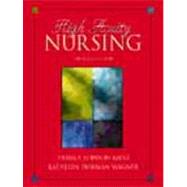
| Preface | v | ||||
| About the Authors | vii | ||||
| Contributors | ix | ||||
| Reviewers | xi | ||||
| Acknowledgments | xiii | ||||
| Part I: Special Topics | 1 | (104) | |||
|
3 | (26) | |||
|
29 | (22) | |||
|
51 | (24) | |||
|
75 | (30) | |||
| Part II: Respiration And Ventilation | 105 | (116) | |||
|
107 | (36) | |||
|
143 | (22) | |||
|
165 | (40) | |||
|
205 | (16) | |||
| Part III: Cellular Oxygenation | 221 | (54) | |||
|
223 | (14) | |||
|
237 | (16) | |||
|
253 | (12) | |||
|
265 | (10) | |||
| Part IV: Perfusion | 275 | (108) | |||
|
277 | (12) | |||
|
289 | (32) | |||
|
321 | (48) | |||
|
369 | (14) | |||
| Part V: Neurologic | 383 | (136) | |||
|
385 | (32) | |||
|
417 | (58) | |||
|
475 | (8) | |||
|
483 | (30) | |||
|
513 | (6) | |||
| Part VI: Metabolic | 519 | (162) | |||
|
521 | (28) | |||
|
549 | (30) | |||
|
579 | (38) | |||
|
617 | (28) | |||
|
645 | (26) | |||
|
671 | (10) | |||
| Part VII: Gastrointestinal | 681 | (98) | |||
|
683 | (34) | |||
|
717 | (28) | |||
|
745 | (22) | |||
|
767 | (12) | |||
| Part VIII: Injury | 779 | (100) | |||
|
781 | (24) | |||
|
805 | (26) | |||
|
831 | (34) | |||
|
865 | (14) | |||
| Part IX: Life Span: Special Needs | 879 | (126) | |||
|
881 | (40) | |||
|
921 | (58) | |||
|
979 | (26) | |||
| Index | 1005 |
The New copy of this book will include any supplemental materials advertised. Please check the title of the book to determine if it should include any access cards, study guides, lab manuals, CDs, etc.
The Used, Rental and eBook copies of this book are not guaranteed to include any supplemental materials. Typically, only the book itself is included. This is true even if the title states it includes any access cards, study guides, lab manuals, CDs, etc.